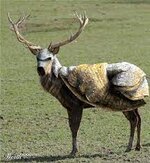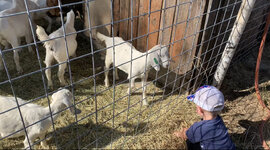Yes, all three of those, multiplied and turned into a number that has no actual meaning are stupid.
You're taking what is essentially a fossil's old wives tale's and assigning a number to them, and then declaring a larger number better.
I'll make my own scale. We'll call it Z's BS, or ZBS.
It takes muzzle velocity * BC / powder charge.
And we'll get some numbers that mean absolutely nothing when talking about killing an animal, but all the modern short fat cartridges shooting long for caliber/high twist rates would come out ahead.
Now let me do what you're doing -
But what part would be wrong? Do you disagree that high BC bullets putting more energy and velocity down range is bad? Do you disagree that a higher muzzle velocity is detrimental to killing animals? Do you think doing that with the smallest powder charge and least recoil would be bad for hunting?
Im sorry, now Im confused... it feels like you are arguing, but at the same time proving my point? I think I have been clear that I prefer higher BC bullets (all else being equal) and more energy (all else being equal) and more velocity... and once I have met my minimum threshold for cartridge capability for my needs, I dont want "more powder" in the form of an even bigger cartridge than I need. (certainly a 300wm is going to have a lot less powder than a 338LM right?)
As far as BCs go... lets talk about the difference between the 6.5 options and 30 cal options. Take the 143 ELDX vs the 200 ELDX and the 212 ELDX. The 143 has a G1 BC of .625, the 200 (not at the top end the the 300wm capabilities) has a .597, and the 212 (handloads only for the 300win) has a G1 BC of .663. Comparing the Berger EOL line, the highest BC available for the 6.5 class is .679 (156 EOL) , but the highest BC available for 30 cals is .807 (245 EOL) (.807 is higher than .679). Seems like if I want the highest BC possible (and of course more energy) I should choose a rifle chambered in a 30 cal cartridge rather than a 6.5 cartridge... all else being equal of course.
The least amount of recoil possible is better. Yes, I agree with this. Never said I didnt. Whether you like to or not, I hunt with brakes on my rifles because a good side brake makes my 28 nos and 300 win rifles kick like a creedmoor, and my kids shoot them better. However, my optimal "one rifle" scenario, including larger game like elk, does not fully tell the whole story. As ive pointed out, we hunt with a variety of calibers, especially for deer. If I send one of my older boys out on their own, they have their pick of rifles... one prefers my tikka 300win, the other a ridgeline 6.5cm. Both are capable with either, and within their own max yardage capability, either will do the job adequately on deer. Likewise, as I own rifles in 223, 243, 6.5, 7mm, 308, 270, 280ai, 300win, 28nos, not to mention short range or muzzleloader options. I encourage a lot of less experienced hunters to come join our deer camp from time to time, and sometimes I have a lot of my rifles being lent out. Take this year for example, we had 16 new hunters in our camp this year, between myself and 5 other dads and grandpas, all of varying experience and capabilities. I ended up supplying all but 3 of the rifles needed. So, there were hunters from our camp with 308s and 7mms, and 243s. But each knew the capabilities of their particular rifle system. For example, I have a 308 that some of my youngest hunters love, partly because it weighs a ton and has extremely low perceived recoil... but it has a relatively low power scope on it, and I ask the hunters using it in particular to keep shots under 200-250 yards. In fact, under most situations, I dont let my first time hunters shoot beyond 150 yards with any of our rifles... so any hunting caliber will do... (unless I have all the other variables under control, good prone position, I have time to get an accurate range, scope is dialed, kid is comfortable, etc... and even then I will be putting them behind my rifle, and not behind one of our "backup/lender" rifles). So... yes recoil matters, and yes, when yardage constraints dictate shorter ranges due to inexperience, then a 6.5 or other sub 300wm options are excellent choices. However, for ELK at 600 yards, I want to have my 28 nos or 300win with the right bullets.


